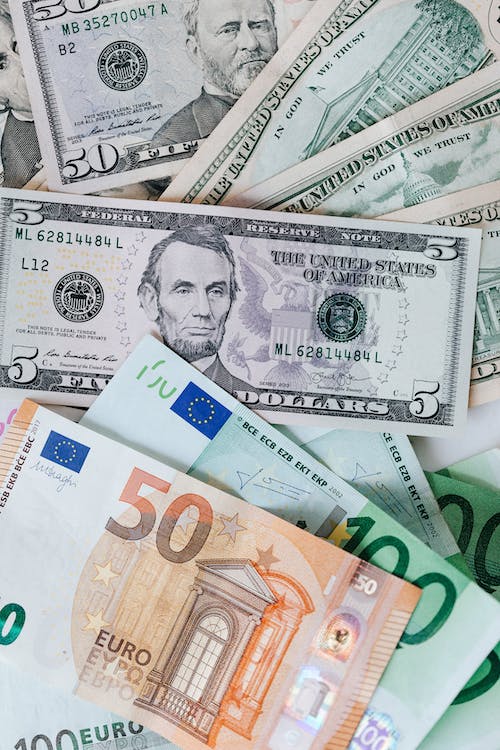Major Currency Pairs Australia
Australia, as a major player in the global economy, has a unique currency market with its own set of major currency pairs. These currency pairs represent the most actively traded currencies in Australia and are of significant interest to traders and investors alike. In this article, we will explore the major currency pairs in Australia, their characteristics, and factors that influence their movements.
Recommended Forex Brokers in Australia
Australian Dollar (AUD/USD)
The Australian Dollar, denoted as AUD, is one of the most actively traded currencies worldwide. The AUD/USD currency pair represents the exchange rate between the Australian Dollar and the United States Dollar. As the United States is a major trading partner and Australia’s largest export destination, economic indicators and events from both countries heavily influence this currency pair. Factors such as interest rate differentials, commodity prices (particularly gold and iron ore), geopolitical events, and economic data from Australia and the United States impact the AUD/USD exchange rate.

Australian Dollar (AUD/JPY)
The AUD/JPY currency pair represents the exchange rate between the Australian Dollar and the Japanese Yen. Japan is Australia’s second-largest export destination, making this currency pair of great importance. Key factors influencing the AUD/JPY include interest rate differentials, economic data from Australia and Japan, commodity prices, and broader market sentiment. As both currencies are considered higher-yielding currencies, the pair tends to be influenced by risk-on and risk-off sentiment in global markets.
Australian Dollar (AUD/EUR)
The AUD/EUR currency pair represents the exchange rate between the Australian Dollar and the Euro. This pair is influenced by economic data and events from Australia and the Eurozone. Factors such as interest rate differentials, inflation, trade balances, and geopolitical events impact the AUD/EUR exchange rate. It is worth noting that the Eurozone is a significant trading partner for Australia, making this currency pair important for traders and investors looking to diversify their portfolios.
Australian Dollar (AUD/GBP)
The AUD/GBP currency pair represents the exchange rate between the Australian Dollar and the British Pound. Economic data and events from both Australia and the United Kingdom influence this currency pair. Factors such as interest rate differentials, inflation, trade balances, political developments, and market sentiment impact the AUD/GBP exchange rate. The pair tends to be influenced by Brexit-related news and economic indicators from the UK, as well as commodity prices and broader market trends.
Major Currency Pairs in Australia faqs
What are major currency pairs?
Major currency pairs are the most actively traded currency pairs in the foreign exchange market. They involve the currencies of major global economies and represent a significant portion of the daily trading volume.
Which are the major currency pairs in Australia?
The major currency pairs in Australia include:
- AUD/USD (Australian Dollar/United States Dollar)
- AUD/JPY (Australian Dollar/Japanese Yen)
- AUD/EUR (Australian Dollar/Euro)
- AUD/GBP (Australian Dollar/British Pound)
What factors influence the major currency pairs in Australia?
Several factors influence the major currency pairs in Australia. These factors include:
- Interest rate differentials: Differences in interest rates between countries can impact currency values.
- Economic indicators: Economic data such as GDP growth, employment rates, inflation, and trade balances influence currency pairs.
- Commodity prices: Australia is a significant exporter of commodities like gold and iron ore. Changes in commodity prices can affect the Australian Dollar and, subsequently, the major currency pairs involving AUD.
- Geopolitical events: Political developments, trade agreements, and geopolitical tensions can impact currency pairs.
- Market sentiment: Investor sentiment, risk-on or risk-off behavior, and global market trends influence currency movements.
How can traders and investors benefit from trading major currency pairs in Australia?
Trading major currency pairs in Australia offers several benefits. These include:
- Liquidity: Major currency pairs are highly liquid, meaning there are ample opportunities for buying and selling without significant price impact.
- Volatility: Volatile currency movements can present profit opportunities for traders.
- Diversification: Trading major currency allows traders and investors to diversify their portfolios and reduce risk.
- Market transparency: The major currency are closely monitored and analyzed, providing traders with a wealth of information and research to make informed decisions.
Are there any risks involved in trading major currency pairs in Australia?
A: Yes, trading major currency involves risks. The foreign exchange market can be highly volatile, and currency values can fluctuate rapidly. Traders should be aware of the risks associated with leverage, market sentiment shifts, economic events, and geopolitical factors that can affect currency movements. Risk management strategies, such as setting stop-loss orders and proper position sizing, are important to mitigate potential losses.
Where can traders and investors find information on major currency pairs in Australia?
Traders and investors can find information on major currency in Australia from various sources, including financial news websites, economic calendars, central bank statements, government reports, and reputable financial institutions. Additionally, trading platforms and tools often provide real-time charts, analysis, and market news to assist traders in making informed trading decisions.
Conclusion
Understanding the major currency in Australia is crucial for traders and investors operating in the Australian foreign exchange market. The AUD/USD, AUD/JPY, AUD/EUR, and AUD/GBP currency pairs offer opportunities for profit and risk management. Traders should closely monitor economic indicators, interest rate differentials, commodity prices, geopolitical events, and broader market sentiment to make informed trading decisions.
It is important to remember that currency markets are influenced by numerous factors, and exchange rates can be volatile. Traders and investors should conduct thorough analysis, consider risk management strategies, and stay updated with the latest news and market trends. Additionally, seeking advice from financial professionals or utilizing advanced trading tools can provide valuable insights and enhance trading performance in the Australian currency market.






